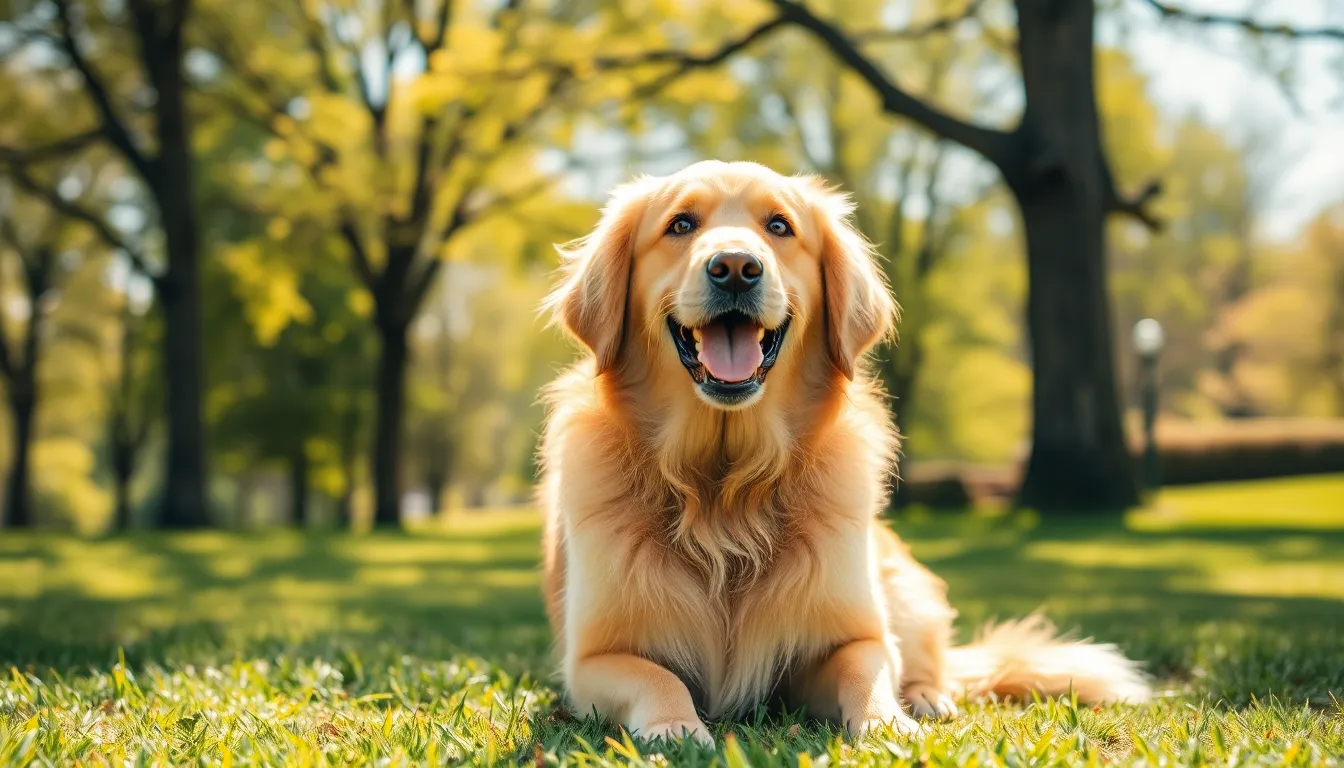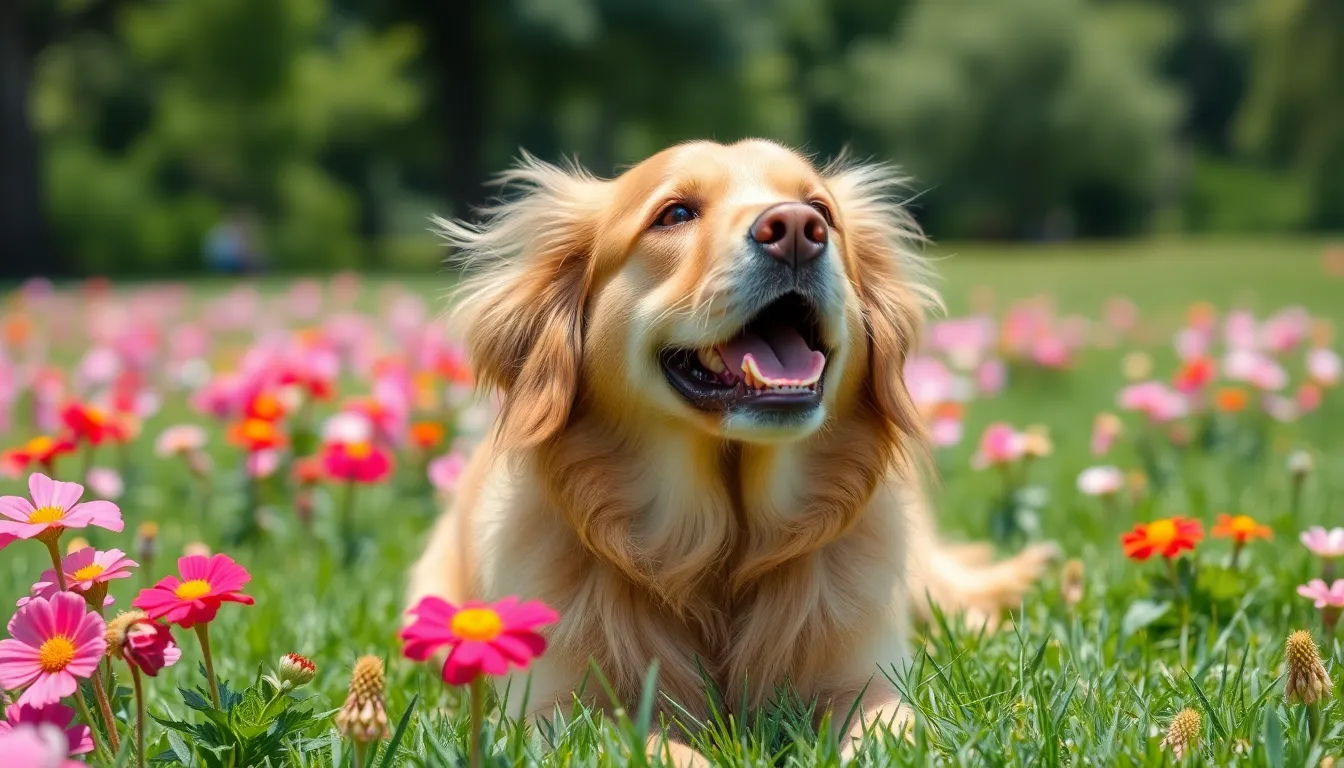Table of Contents
ToggleEver wondered how your beloved pooch measures up in the grand scheme of life? While humans age gracefully, dogs seem to have their own quirky timeline. The classic rule of thumb suggests that one human year equals seven dog years, but let’s dive deeper into this canine conundrum.
Understanding Dog Years
A common misconception exists regarding how to calculate dog years. Many people believe that each human year equals seven dog years, but this method oversimplifies the aging process. A more accurate understanding of dog aging reflects breed size and individual health factors that influence lifespan.
Smaller breeds tend to live longer than larger breeds. For example, Chihuahuas may reach 15 years or more, while Great Danes typically have a lifespan of about 7 to 10 years. This variation indicates that one-size-fits-all calculations do not apply when considering aging in dogs.
Research suggests the first year of a dog’s life correlates to roughly 15 human years. By the second year, they age about 9 additional human years. After that, the aging pace slows down, averaging about 4 to 5 human years for each subsequent dog year, depending on breed and size.
A detailed conversion chart can provide clarity. Below is a simple breakdown for various breeds:
| Dog Age (Years) | Human Age Equivalent (Years) |
|---|---|
| 1 | 15 |
| 2 | 24 |
| 3 | 28 |
| 5 | 36 |
| 10 | 56 |
| 15 | 76 |
Understanding these factors allows dog owners to appreciate their pet’s aging process better. Health care needs may change as dogs age, highlighting the importance of regular veterinary check-ups. Awareness of a dog’s age in human years assists owners in providing appropriate care and enrichment opportunities to ensure the dog’s well-being.
The Calculation of Dog Years


Calculating dog years involves understanding how canine aging works in comparison to human aging. The process isn’t as simple as multiplying by seven.
The 7-Year Rule
The 7-year rule suggests that each dog year equals seven human years. This concept oversimplifies the aging process. In reality, the first year of a dog’s life translates to approximately 15 human years, while their second year equals about 9 human years. After that, dogs age roughly 4 to 5 human years for each additional year, influenced by breed size. For instance, larger breeds tend to age faster than smaller ones.
Factors Affecting Aging
Several factors contribute to the rate at which dogs age. Breed plays a crucial role, as smaller dogs often live longer than larger counterparts. Genetic predispositions can also influence health and longevity. Lifestyle factors, such as diet and exercise, directly affect a dog’s overall well-being and aging process. Regular veterinary care adjusts health needs according to age, ensuring dogs get appropriate support as they grow older. Each of these aspects combines to shape a dog’s life expectancy and aging journey.
Life Stages of Dogs
Understanding a dog’s life stages enhances pet care. Each stage represents unique needs and behaviors.
Puppy Stage
Puppies undergo rapid growth in their first few months. During this period, they should receive proper vaccinations and socialization. First-year dogs equate to about 15 human years. Early training proves critical for behavioral development. Nutrition plays a significant role in their health. A balanced diet supports their growing bodies. Interaction with other dogs helps build social skills. Engaging in playtime fosters bonding with owners. Adapting to the environment ensures they feel secure and confident.
Adult Stage
Adult dogs, typically between 1 and 7 years old, show maturity. This stage requires consistent exercise to maintain physical health. Regular vet check-ups help monitor any health changes. A balanced diet remains crucial for energy and overall well-being. Mental stimulation from training and interactive toys keeps them engaged. Socializing with other dogs prevents behavioral issues. Owners can enjoy the companionship and loyalty that adult dogs exhibit. Breed tendencies may influence behavior and activity levels. Attention to these details enhances the dog’s quality of life.
Senior Stage
Senior dogs, usually aged 7 years and older, experience notable changes. Their energy levels might decline, necessitating adjustments to exercise routines. Regular veterinary visits become essential to managing age-related conditions. Diet may need alterations to accommodate specific health needs. Joint supplements can improve mobility and comfort. Owners should prioritize mental engagement through gentle activities. Increased affection and attention help foster strong bonds during this stage. Awareness of aging signs leads to proactive care decisions. Senior dogs deserve a comforting and stimulating environment to thrive.
Common Myths About Dog Aging
Many people believe that one human year equals seven dog years. This oversimplification misrepresents the aging process of canines. Instead, the first year corresponds to about 15 human years, the second year to around 9 years, and each following year usually equals 4 to 5 human years, depending on the dog’s breed and size.
Another myth asserts that large breeds age more slowly than small breeds. In reality, larger dogs often age faster, leading to shorter lifespans. For instance, Great Danes typically live for 7 to 10 years, while Chihuahuas frequently reach 15 years or more.
Some dog owners think senior status begins at 10 years. However, most dogs enter their senior phase around 7 years. At this point, health considerations change, and customized care becomes crucial.
Another misconception is that all breeds experience aging in the same way. Breed-specific differences significantly impact the rate of aging and health issues. For example, some breeds are predisposed to certain health conditions, affecting their longevity.
Regular veterinary visits are also underestimated. These check-ups provide necessary insights into aging health needs, helping identify health issues early on. Awareness in these appointments can lead to better care adjustments for aging dogs.
Lastly, dietary needs are often overlooked. Senior dogs may require a specialized diet to support their changing metabolism and nutritional needs. Prioritizing a balanced diet fosters better health and longevity in aging dogs.
Health Considerations for Older Dogs
Older dogs face unique health challenges. Regular veterinary check-ups play a crucial role in managing their health. These visits allow veterinarians to monitor changes in weight, mobility, and overall behavior. Routine screenings for common conditions, like arthritis or dental disease, help catch issues early. Vaccinations should also be kept up to date to prevent disease. Tailored health plans can adjust as a dog ages, ensuring specific needs are met and allowing owners to understand their pet’s condition better.
Diet and nutrition significantly impact an older dog’s health and well-being. Providing a balanced diet that caters to specific age-related needs supports their vitality. Nutrient-dense foods rich in antioxidants promote immune health, while proper fiber levels assist digestion and weight management. It’s essential to choose diets formulated for senior dogs, as these typically contain fewer calories but higher quality ingredients. Special attention should be given to hydration, as older dogs may experience changes in thirst. Adjusting portions based on activity levels helps maintain a healthy weight and supports a long life.




